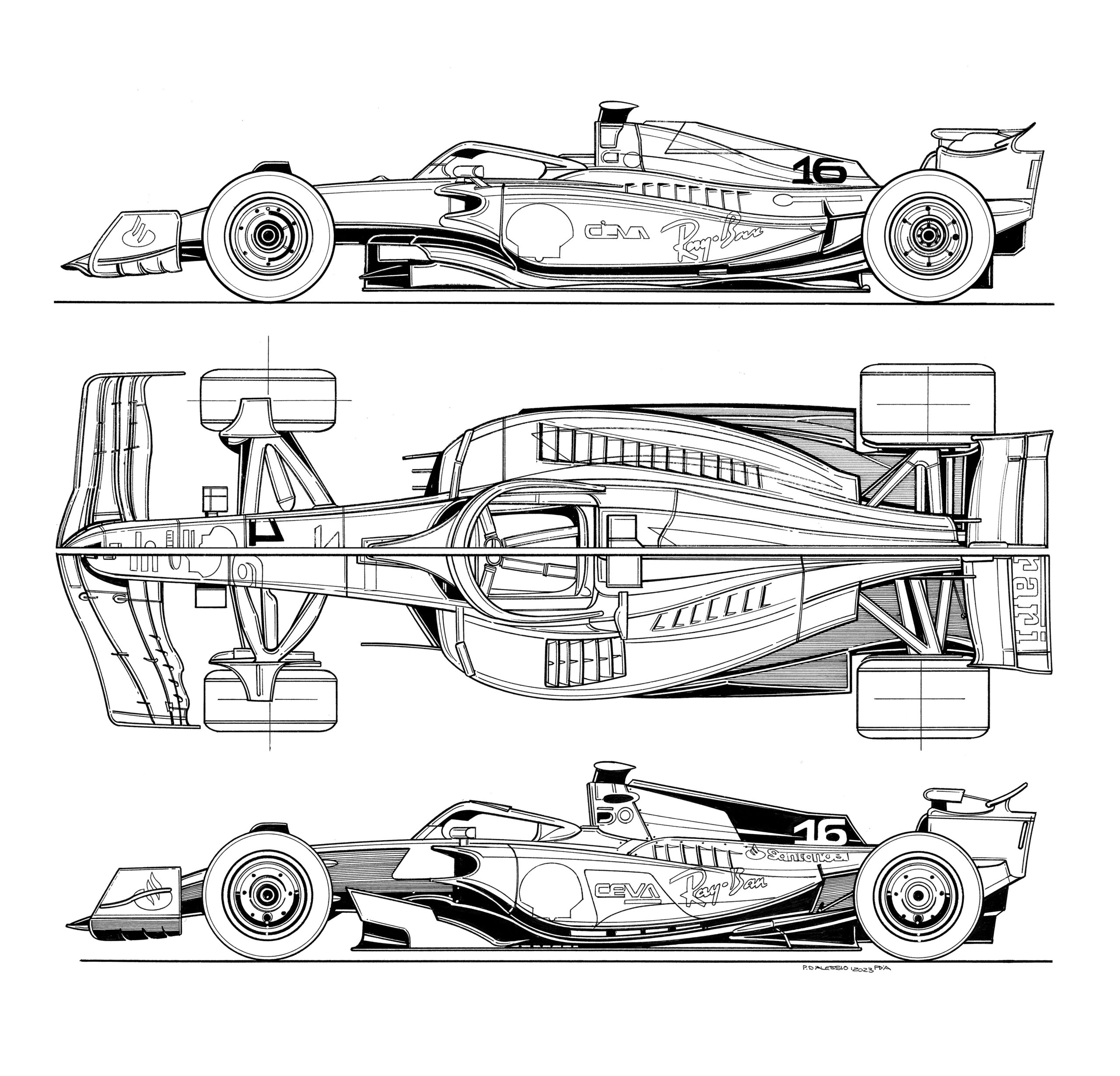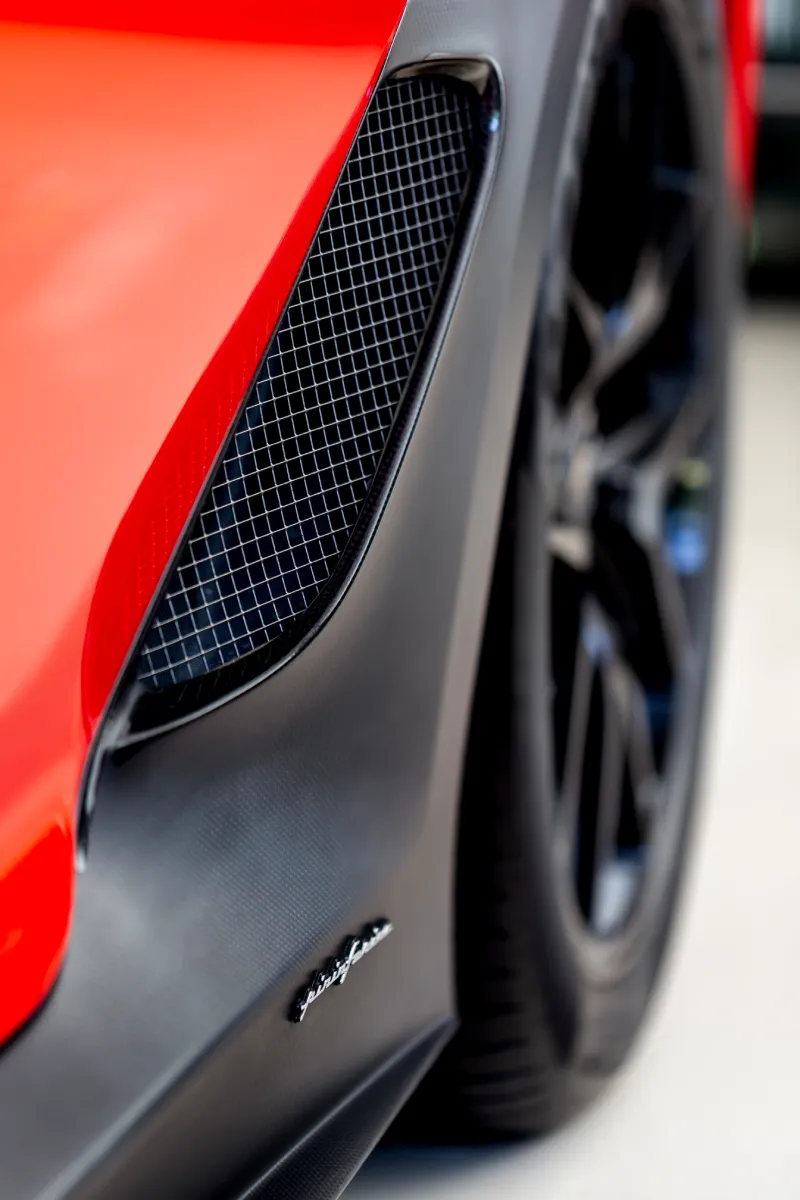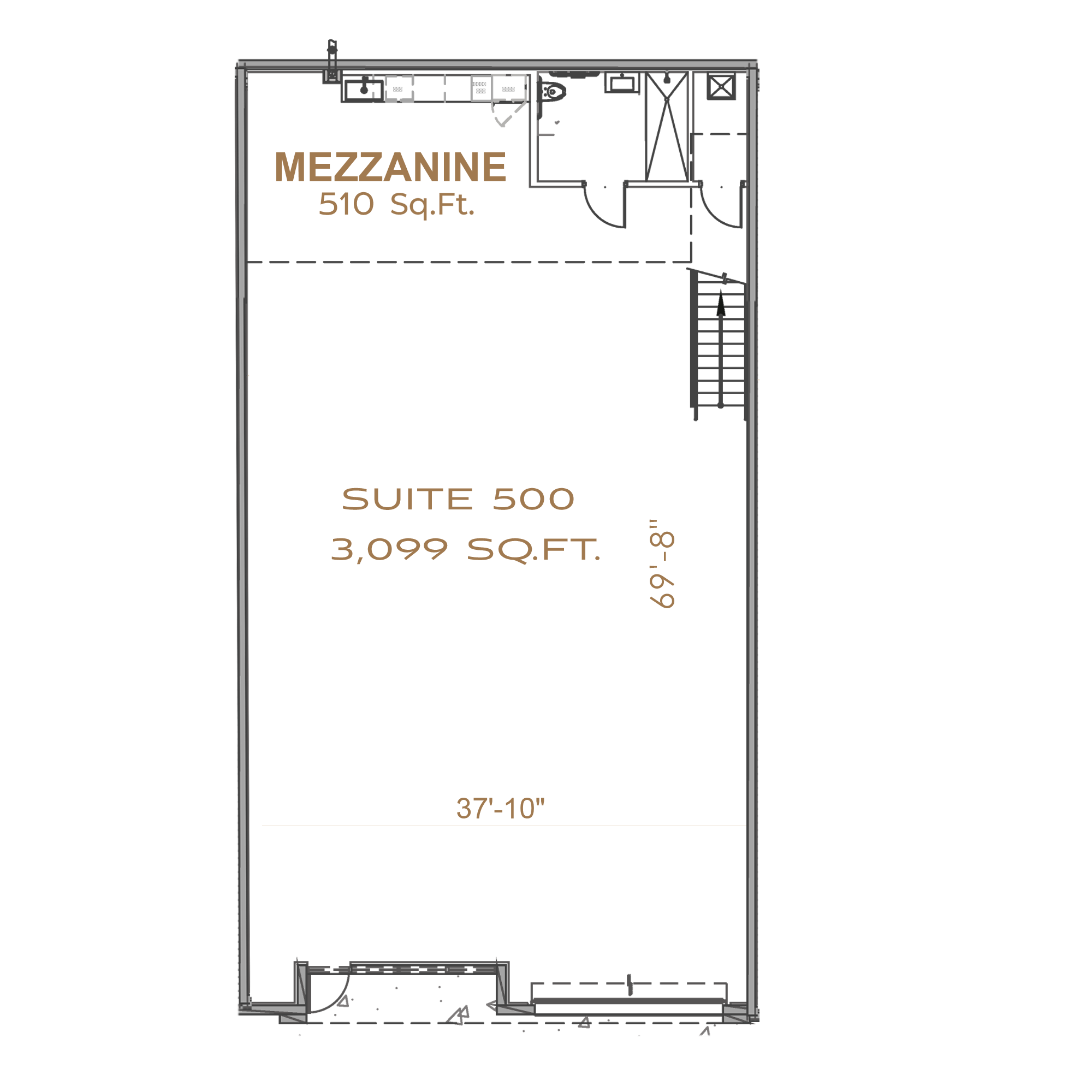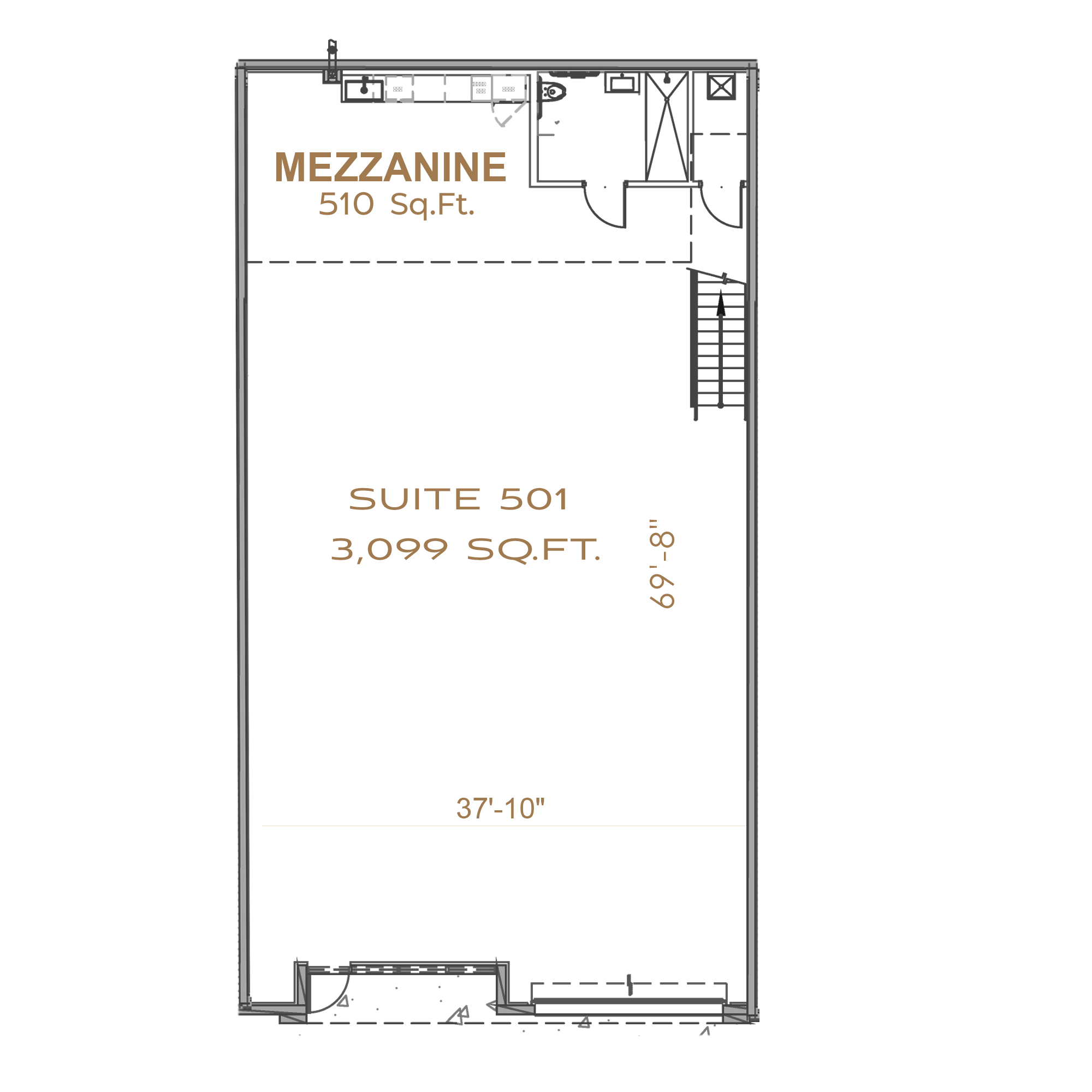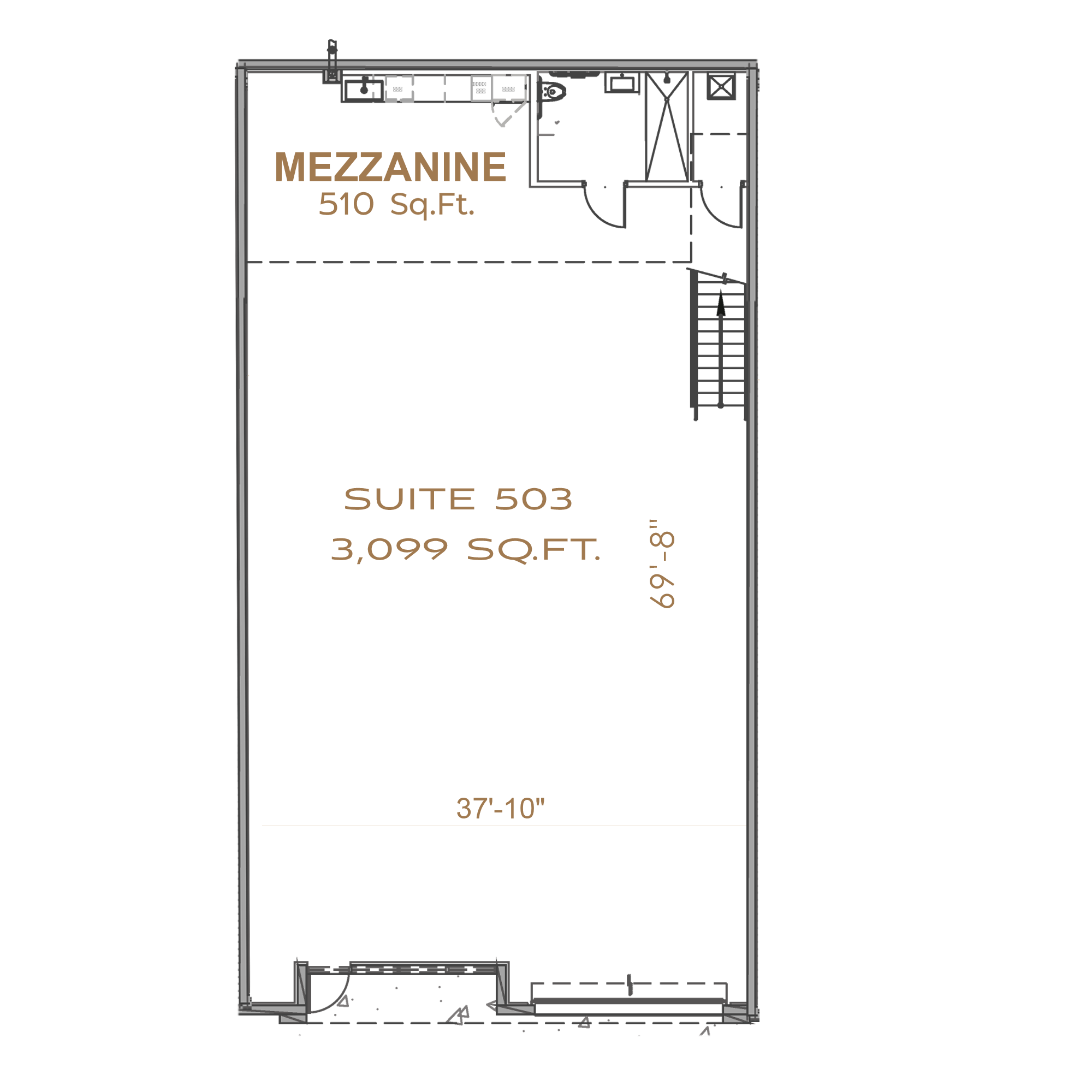Will the Ferrari SF-23 be able to return to Maranello that double world title that has been missing since 2007? Benedetto Vigna, general manager, and Frédéric Vasseur, Cavallino’s new number one, have no doubts: the goal for 2023 is the world title.
To find out if this really happens, we will have to wait for some Grand Prix, but one thing is sure: the SF-23 is not a bet, a leap in the dark, but a very careful single-seater with few revolutions. Each component has been studied to avoid making the mistakes of last season and recover that leadership they had at the beginning of 2022, after some turbulent seasons.
EVOLUTION, NOT REVOLUTION
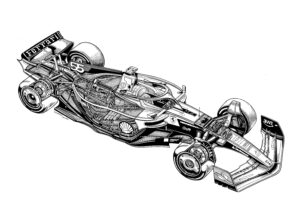
On close inspection, the familiarities with last season’s SF-75 are apparent, but with several significant changes in each sector. This Ferrari does not deny the past and is aware of the potential, only partially expressed, of the 2022 model; the aerodynamic exaggeration of Red Bull or the extra-flat line of Mercedes does not influence it. It is committed to a rational evolution of the previous model, with two objectives: avoid the reliability issues of last season and improve performance in a straight line, reducing drag.
REVISED FRONT
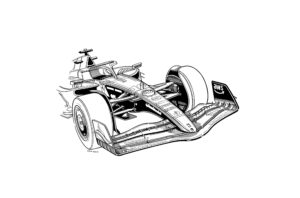
The nose of the SF-23 has undergone the most drastic changes: the striking pointed nose of last year has been replaced by a more conventional element, no longer attached to the central plane but to the first wing. This design, unlike the competition, frees up the entire surface area of the main airfoil and, according to Cavallino’s aerodynamics specialists, should generate more load.
Also different from last year are the two upper profiles, which slope downwards on the outside, accentuating the “outwash” effect and allowing the flows to divert to the outside of the front wheels, reducing turbulence. The SF-23’s front wing also features a series of vortex generators, like the ones Mercedes tested last year, but was not used in the race because they were deemed illegal. However, the solution adopted by Ferrari should have a different fate because the supports used are smaller to comply with the limits imposed by the regulations. Always with an aerodynamic view, the front suspension, which maintains the pushrod design, has been revised in the arrangement of the triangles. In contrast, the steering arm has been moved down and inserted into the lower triangle of the suspension, like the steering box, to further lower the car’s center of gravity.
REDESIGNED SIDES

The design of the sides follows the same line of thinking. In 2023, Cavallino’s technicians were not compelled to copy Red Bull, preferring to continue developing the solutions introduced last year on the SF-75. An attempt was made to improve the aerodynamic efficiency of the 2022 car by reducing the front section of the side pods. Let’s go in order, starting with the shape of the air intake on the sides, which are flattened, elongated, and placed even higher to accentuate the reduction at the bottom. This conformation, as you may recall, was introduced by Ferrari in 2017 (and then copied by all the teams) and allows for acceleration of the airflows on the outside of the side pods and then hit the rear. This happened in the F1-75 and the SF-23; the hot air, expelled by the radiant masses, is done through a series of open slits in the hood. In 2023, the latter were redesigned and divided into two distinct elements: the first is in the initial part of the side, and the second is near the hood. Presumably, thanks to the improved aerodynamic conformation of the SF-23, on some tracks, the rear grille could be removed and replaced by a closed fairing to improve the car’s speed performance on a straight line. To shorten the gap with Red Bull, the underbody- an essential component in the performance of a Formula 1 with ground effect- was also redesigned, eliminating the step introduced in the last French Grand Prix but maintaining the rise in the central part. Finally, as the drawing shows, the rear is characterized by an even more accentuated narrowing. At the same time, the hood adheres perfectly to the exhaust tip, forgoing hot air release through a large rear diffuser, as many competitive cars do.
THE SECRET CONDUIT
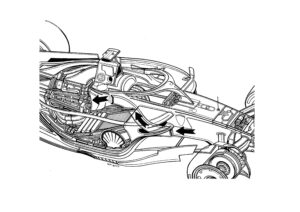
Probably taking advantage of a regulatory loophole difficult to replicate by the competition, Ferrari introduced in 2023 a solution in the SF-23 that would recall the operating principle of the S-Duct, introduced in 2008 by Cavallino’s technicians in the F2008.
What is it about? Above the leading edge of the sides, a small air intake has been created to feed a channel into the inside of the side, then venting the airflow over the top of the side pods through two openings behind the halo accessory. In aerodynamic terms, this solution would not significantly reduce aerodynamic resistance since the forced path is too tortuous to obtain notable benefits. Still, it would help clean the airflow that brushes the upper part of the sides of turbulence, helping extract hot air through the cooling grills. A small gain that, if it works, will most definitely be copied by the competition in 2024.
UNDERBODY CHANGES
Turning to the mechanics, in addition to the modifications in the front suspension, in the rear suspension, we find pull-rod kinematics, with no significant variations in the attachment points of the triangles, but with essential interventions in the internal components, such as springs and shock absorbers, to try to counter excessive tire wear for 2022.
Last winter, Ferrari’s car also underwent drastic slimming, approaching the minimum weight of 798kg. At the same time, new power unit reliability should give the SF-23 back all the power it had lost as a precaution in 2022. There is no need to talk about figures not communicated by Ferrari. Enrico Gualtieri, head of Cavallino’s engine area, says, “The interventions we made were mainly in the areas where we had difficulties last season. So, we focused on the internal combustion engine and the electrical part. At the same time, however, we have tried to capitalize on the experience gained on the track in 2022, so we have tried to work on all the weaknesses derived from the power unit components used.”
